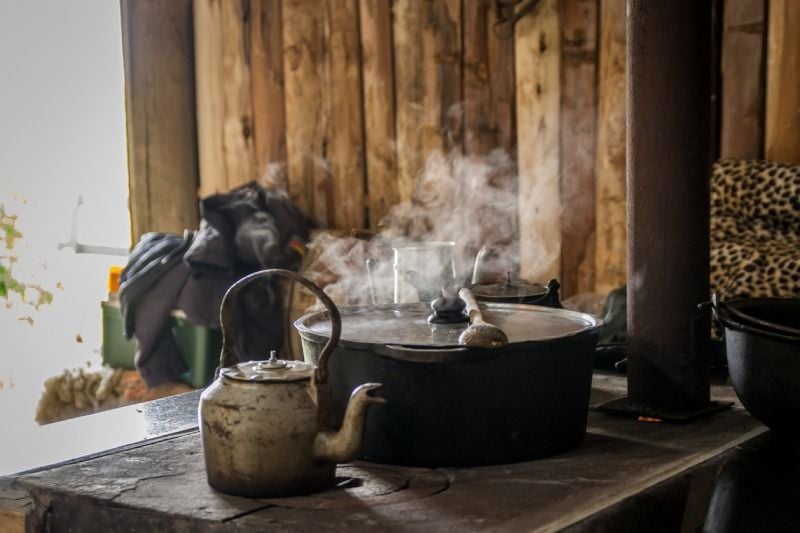Three Steps to Master Cooking On A Wood Stove
)
It’s getting chilly! Some people have started dipping into their wood piles, while others resort to cranking up the thermostat while dreaming of a crackling fire.
If you’ve been considering heating your house the old fashioned way, you’ve probably been thinking a lot about the logistics of wood cook stoves; but did you know that you can also use them to prepare delicious home-cooked food?
It’s time to bring your interest to a boil; today, we’re exploring three ways to master cooking on a wood stove.
Know Your Wood Stove’s Temperature!
We can’t stress this enough: invest in a good thermometer. While it may seem like an obvious tip, it’s essential, and a surprisingly easy step to overlook. A good thermometer will allow you to get the best possible results when cooking by accurately gauging your wood stove temperature --after all, you wouldn’t preheat your oven while blindfolded.
The temperature a stove reaches depends largely on the stove itself, as well as the wood you use and the care with which you monitor the fire. Practice makes perfect, and using a high-quality thermometer will ensure that you reach the optimum temperature and know how you managed it, which will allow you to predictably reproduce your results every time you make a recipe.
Know The Wood in Your Wood Cook Stove!
Just like with the thermometer, it’s essential to use good-quality wood--you can’t just burn any old thing and expect a thoroughly cooked and tasty meal to pop out. Ensure your wood is dry, as this will allow it to burn more predictably and more evenly. Wet wood must first dry out in the fire before it can produce heat, which means you lose valuable cooking time, not to mention the smoke that will fill your kitchen.
If your stomach is rumbling as you head to your wood pile, don’t bite off more than you can chew. You may want to pick the biggest log you can carry to start a roaring blaze, but smaller pieces of wood are better for cooking, as they burn faster. Slow-cooking is another story entirely--yes, you can do slow cooking on a wood stove! Select large, solid and dry pieces of wood for slow cooking, as they will burn longer at a lower heat.
Use Pots and Pans Wisely To Maximize Your Wood Stove Temperature
Once you’ve got the fire where you want it and the stove is at the right temperature (don’t eyeball it--remember to check!), it’s time to preheat your pans. This step is essential, and it will make a world of difference in the time it takes you to throw dinner together. Don’t use your old teflon pans for this: for best results, use cast iron. Once you add the food, keep the pan lids on to prevent heat from escaping.
Finally, the fun part: the smell of the food. While you don’t have to be constantly hovering, once you’ve got the hang of using the cookstove you can use the smell of the meal to alert you that it might be close to being ready. All that’s left to do is set the table!
Research Cooking On A Wood Stove
Do your research! Homesteading blogs and do-it-yourself websites are a great place to learn from people with firsthand experience using wood cook stoves. Like everything else, cooking on a wood stove takes practice, and practice makes perfect. Don’t worry if you don’t get the hang of it right away; cooking on a wood stove is as much art as it is science, and eventually you’ll be comfortable enough to know exactly what you’re doing.
Always be sure to follow all safety guidelines associated with using your wood stove and thermometer, and be sure to always read and carefully follow recipes to make sure you thoroughly cook your food.
So go ahead and start whipping up your signature dishes! Hungry? Check out our wide selection of wood cook stoves today or contact us to learn more.| Tags:NewsCook Stoves |



